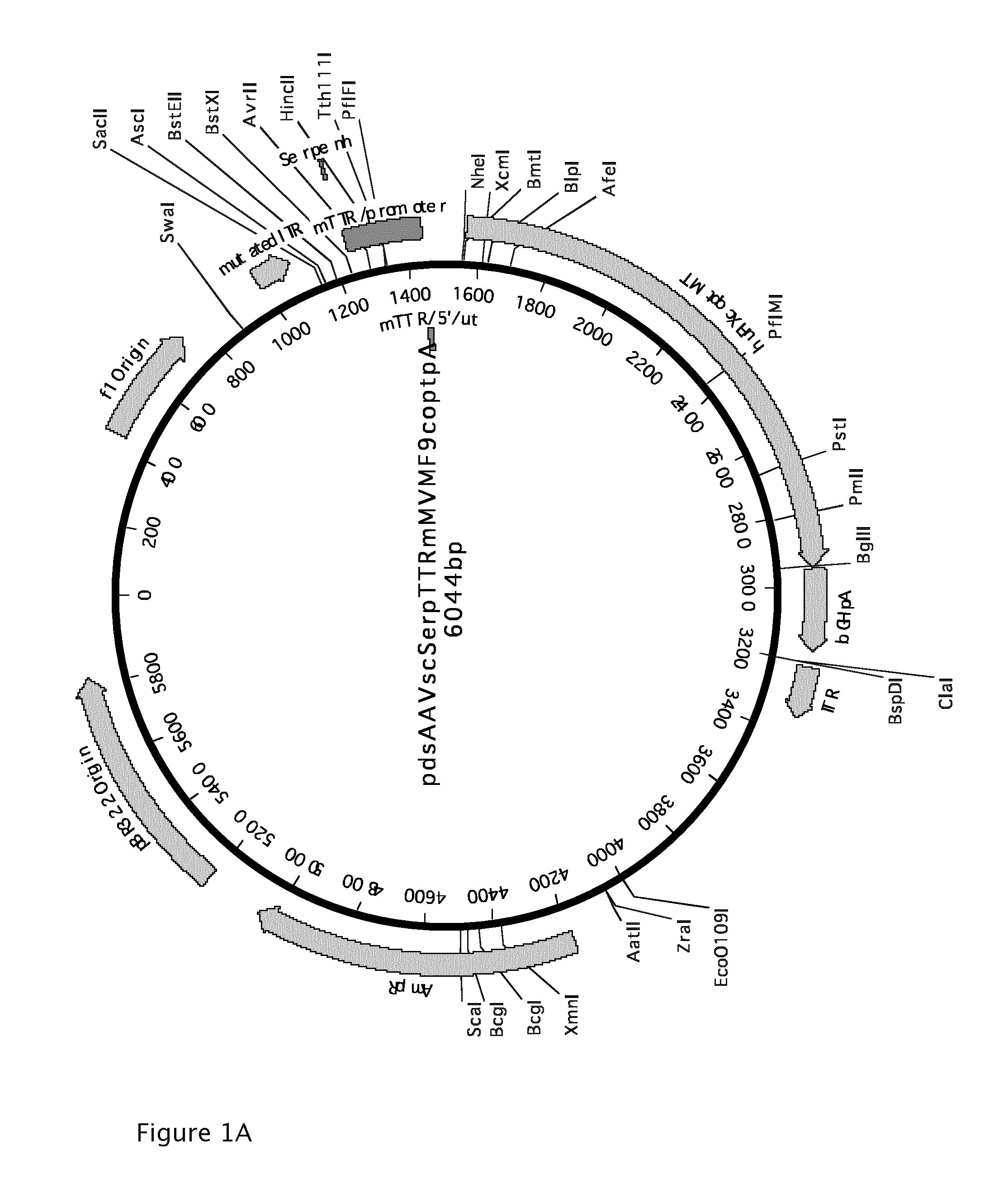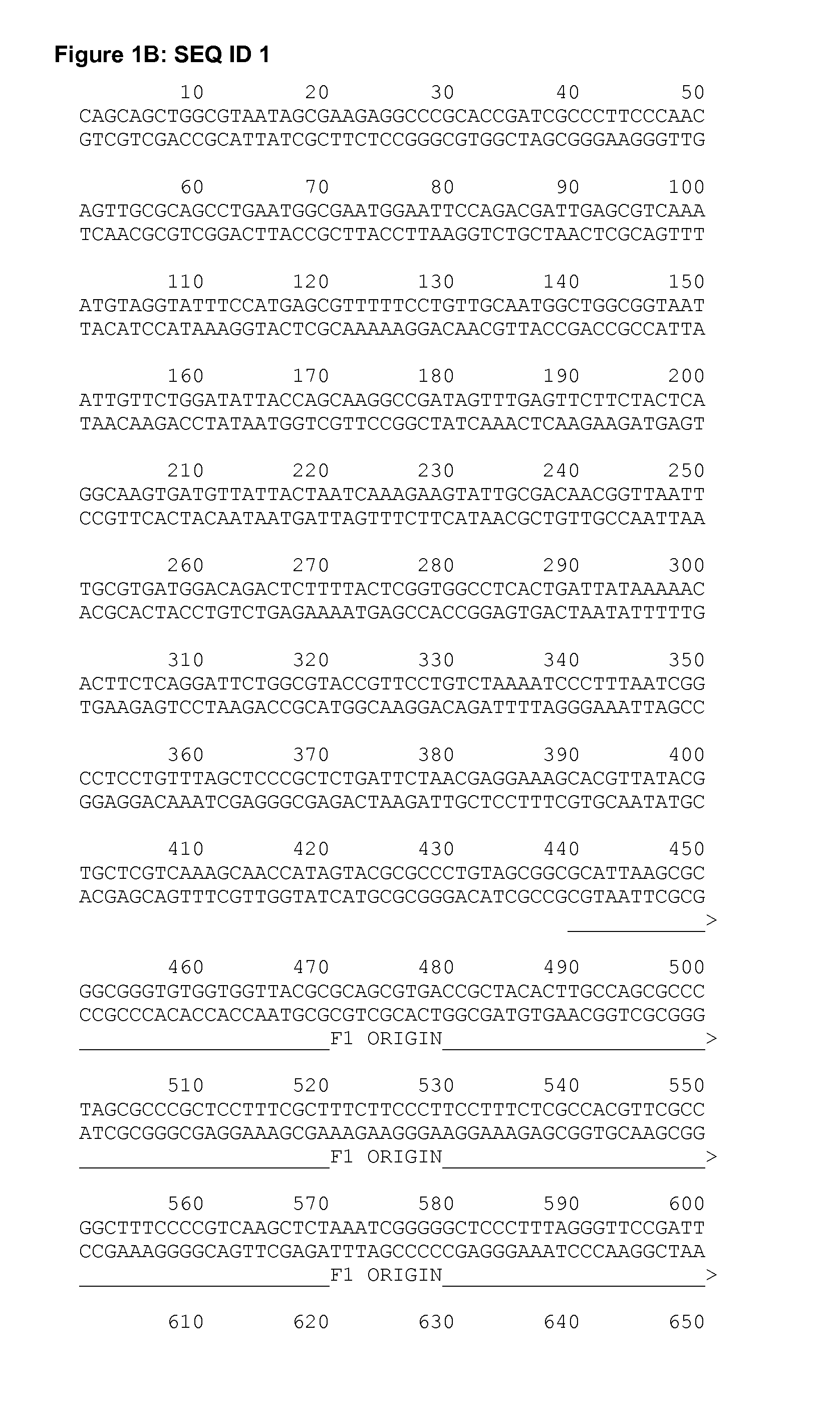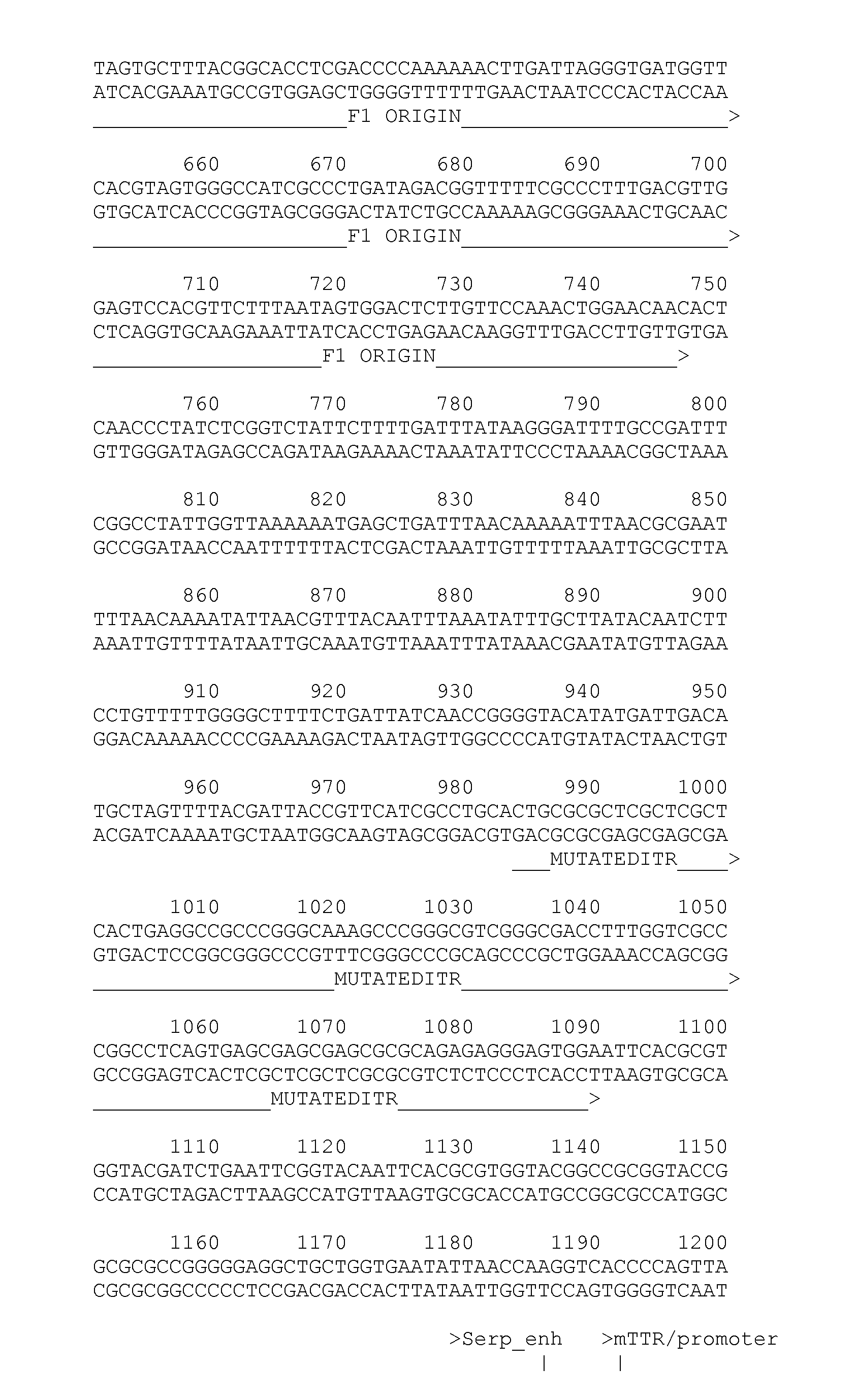Vectors for Liver-Directed Gene Therapy of Hemophilia and Methods and Use Thereof
- Summary
- Abstract
- Description
- Claims
- Application Information
AI Technical Summary
Benefits of technology
Problems solved by technology
Method used
Image
Examples
example 1
In Vivo Validation of Liver-Specific Regulatory Enhancer Sequences Expressing Hyper-Active FIX Via AAV Vector Gene Delivery
Materials and Methods
Vector Construction
[0202]AAV-based vectors were constructed that express either the codon-optimized factor IX or the codon-optimized factor IX with the Padua R338L mutation from the TTRm promoter operably linked to the Serpin regulatory sequence. The Serpin regulatory sequence has been identified and described under patent application WO2009 / 130208.
[0203]An intron and poly-A sequence were also provided. The full sequence of the construct containing the codon-optimized factor IX is given in SEQ ID No.1 (FIG. 1B) and the construct containing the codon-optimized factor IX with the Padua R338L mutation in SEQ ID No.2 (FIG. 10). The vectors were constructed by conventional cloning and DNA synthesis. A schematic overview of the AAV vector containing the codon-optimized huFIX is shown in FIG. 1A. The vector with the Padua R338L is identical except ...
example 2
Enhanced, Liver-Specific Expression of FIX Via AAV Vector Gene Delivery
Materials and Methods
Vector Constructs
[0209]A FIX construct comprising human FIX cDNA (hFIX), was cloned downstream of a liver-specific minimal transthyretin (TTRm) promoter in an adeno-associated viral vector 9 (AAV9) backbone. This vector was further improved to AAV9-SerpEnh-TTRm-hFIX, which comprised an additional hepatocyte-specific regulatory element, namely the Serpin regulatory sequence (“Serp” or “SerpEnh”), upstream of the TTRm promoter. To improve the function of this vector, a minute virus of mice (MVM) intron was cloned in between the TTRm promoter and the hFIX transgene (AAV9-SerpEnh-TTRm-MVM-hFIX). Next, the hFIX transgene was codon-optimized in order to augment the expression of the protein (AAV9-SerpEnh-TTRm-MVM-co-hFIX). A further improvement encompassed a mutation, namely the R338L, Padua mutation (FIG. 3C), of the co-hFIX fragment (AAV9-SerpEnh-TTRm-MVM-co-hFIX-R338L).
Vectors:
-AAV9-TTRm-hFIX
-AA...
example 3
Liver-Specific Expression of FVIII Via AAV Vector Gene Delivery
Materials and Methods
Vector Construction
[0222]AAV-based vectors were constructed that express a codon-optimized B domain-deleted human coagulation factor VIII (hFVIIIcopt) cDNA (Ward et al., 2011) from the minimal TTR (TTRm) promoter operably linked to the nucleic acid regulatory element Serpin enhancer (“Serp” or “SerpEnh”) described in WO 2009 / 130208, which is specifically incorporated by reference herein. The codon-optimized B domain-deleted human FVIII cDNA was PCR amplified and subcloned into a pGEM-T easy plasmid (Promega, Belgium) and after restriction with Spel-BamHl, the FVIII cDNA was cloned into the Nhel-Bglll restricted pAAV-SerpEnh-TTRm vector to generate AAV9ss-SerpEnh-TTRm-MVM-hFVIIIcopt-SV40 pA (also indicated as AAVss-SerpTTRm-MVM-FVIIIcopt-sv40 pA herein). This vector also contained a small intron from minute virus of mouse (MVM) to boost FVIII expression levels.
Vector Production
[0223]For titration of t...
PUM
| Property | Measurement | Unit |
|---|---|---|
| Concentration | aaaaa | aaaaa |
| Hydrodynamic wave | aaaaa | aaaaa |
| Coagulation enthalpy | aaaaa | aaaaa |
Abstract
Description
Claims
Application Information
 Login to View More
Login to View More - R&D
- Intellectual Property
- Life Sciences
- Materials
- Tech Scout
- Unparalleled Data Quality
- Higher Quality Content
- 60% Fewer Hallucinations
Browse by: Latest US Patents, China's latest patents, Technical Efficacy Thesaurus, Application Domain, Technology Topic, Popular Technical Reports.
© 2025 PatSnap. All rights reserved.Legal|Privacy policy|Modern Slavery Act Transparency Statement|Sitemap|About US| Contact US: help@patsnap.com



